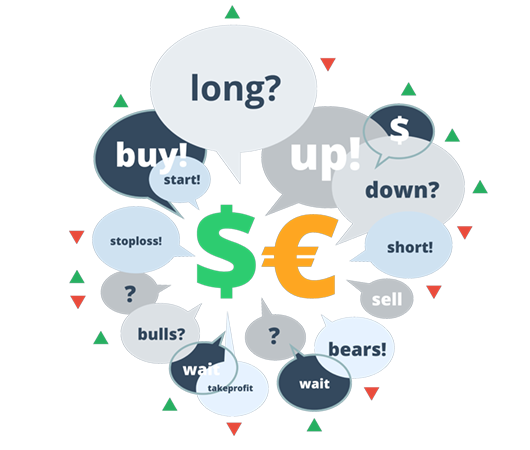Answers to
Practical Questions
The Terrible 2s – Why is 2% the most dangerous number in investing?

For long-term investors, there are three common and easily avoidable mistakes, and each one can cost you at least 2% per year.
Now 2% doesn’t sound like much, you say. Let’s see how 2% per year can CRUSH your portfolio!
The Terrible 2s, i.e., high-cost mutual funds, balanced portfolios too early in an investment horizon, and making too many investment decisions/mistakes can CRUSH your long-term portfolio value.
Let’s run through an example:
If you invest $1,000 in an all-equity portfolio earning say 8% per year, in 40 years you will have $21,725, or 22 times your original investment!
Now if you make only ONE of the above mistakes, and it doesn’t matter which one, your $1,000 will grow to only $10,286, or just 10 times your original investment.
If you were to make TWO of the above mistakes, and it doesn’t matter which two, your $1,000 will grow to only $4,801, or just 5 times your original investment.
Finally, if you were to make all THREE of the above mistakes, your $1,000 will grow to only $2,208, or 2 times your original investment.
| The Terrible 2s can CRUSH your portfolio value: |
|---|
| No mistakes – you earn 22 times your money |
| One 2% mistake – you earn 10 times your money |
| Two 2% mistakes – you earn 5 times your money |
| Three 2% mistakes – you earn 2 times your money |
Mistake #1 – High-Cost Mutual Funds
If you (or your advisor) has purchased a mutual fund from one of the Big Five Banks (i.e., RBC, TD, BMO, Scotia, or CIBC), or life insurance companies (i.e., Sun Life, Great West Life, or Manulife), or you have a mutual fund from AGF, CI Investments, Dynamic, Fidelity, Franklin Bissett (Templeton), Investors Group, Mackenzie, or Sentry, you may well be paying a management expense ratio (MER) of about 2% or higher. According to the Investment Funds Institute of Canada, 68% of all mutual funds sold in Canada are high cost “Series A” mutual funds.
Full disclosure, I own shares in RBC, TD, Scotia, as well as Manulife and Sun Life, BECAUSE they make huge profits by selling high-cost mutual funds to the unsuspecting public, generating great returns and raising share prices for their shareholders.
Mistake #2 – Balanced Portfolios
Long-term investors should only invest in equities, (i.e. stocks), if they plan to leave that money untouched for a minimum of 10 years, and preferably 20, 30, 40 years, or even longer. If you need your money within five years, you should stay clear of equities, and if you need money within 10 years, please consider a balanced portfolio with at least 30–50% fixed income, (i.e. bonds, GICs, preferred shares).
Now 30 or 40 years may sound like a very long time. But ask yourself, how old am I now? And how old do I hope to be when I die? The answer is your investment horizon, and if your investment horizon is 40 years or longer (do the math), as it would be for most people less than 40 years old, then having a balanced portfolio or balanced mutual fund that is 50% fixed income and 50% equities is a HUGE mistake that will cost you 2% per year.

Now it is very true that a balanced portfolio is much less volatile than a portfolio with 100% equities, and that will help you sleep better WHEN, not IF, the stock market decides to have its next crash. But what your advisor isn’t telling you is that this “safety” is costing you 2% per year in forgone returns, and that will cut your long-term portfolio value in HALF.
Why doesn’t your advisor tell you about the cost of this “safety”? Well your friendly advisor wants to keep you happy because s/he knows you hate losing money more than you enjoy making money, (see Loss Aversion, below). “Happy” clients mean less phone calls (read bother) to the friendly advisor. Because of this, your friendly advisor may overemphasize potential short-term losses, even at the expense of long-term gains. The trouble is, some advisors only talk about the first part of the equation (balanced portfolios and lower volatility), but they don’t talk about the second part of the equation (the cost of this safety), i.e., your long-term portfolio will be worth 50% LESS.
Having fixed income in a portfolio is not a bad thing. It does reduce volatility. If you need your money within the next ten years, or are unable to stick to a plan, PLEASE use a balanced portfolio, but remember the benefit of reduced volatility comes with a cost of 50% of your long-term portfolio value.
Mistake #3 – Making Too Many Investment Decisions
Every time you decide to buy or sell a stock or ETF, you are creating an opportunity to make a mistake. All investors, including sophisticated “money managers,” have biases and emotions that can lead to investment mistakes, every time a buy or sell decision is made (a phenomenon known as behavioural finance). Examples include confirmation bias, herding, and worry/anxiety (please see below for definitions of these biases and mistakes, as well as a partial list of other behaviour biases/mistakes).
For individual investors, the profitable and lazy solution for long-term investing success is to reduce the number of buy/sell decisions you make. This is easily achieved by being lazy, and limiting the number of investment decisions you actually make, by having a buy-and-hold philosophy, together with a diversified, low-cost ETF portfolio.
Several research studies suggest behavioural biases that lead to investment mistakes can cost an investor at least 1% per year, and some studies suggest more than 2% per year.

Moral of the Story
The Terrible 2s can CRUSH your portfolio value. Avoid the Terrible 2s by:
Switching high-cost mutual funds to low-cost Exchange Traded Funds (ETFs).
If you have a 30-year, 40-year, or more than 50-year investment horizon, be careful not to include too much fixed income in your portfolio. Ten years before you need to draw on your money, you can adjust your portfolio to be 30–50%, or a higher percentage of fixed income, to reduce volatility and risk at that stage of your life.
Be LAZY. Minimize the number of investment decisions you make. You can simply buy six low-cost ETFs, (take my “Ready to Invest” quiz and Register as a user to find out which ETFs to consider), that will provide you with a low-cost, well-diversified portfolio. Then, at least once per year, all you need to do is check to see if your portfolio needs rebalancing. Less decisions equal less chances of making a mistake.
What are the behavioural biases that lead to poor investment decisions, which combined cost you 2% per year?

Confirmation Bias – We tend to seek out or only pay attention to information that supports our pre-conceived conclusions, i.e., if we own an oil stock and headlines say car sales hit a new record in North America, we pay attention, but we skip the article about millennials not getting driver’s licenses.
Optimism (Overconfidence) Bias – We tend to be over-confident in our abilities, i.e., that is why 80% of drivers think they are above average, and only 2% of high school students think they have below-average leadership skills.
Loss Aversion – We tend to feel less pleasure from winning $100 than we would feel pain from losing $100. Investor losses hurt twice as much as similar-sized investor gains feel good.
Disposition Effect Bias – This is related to Loss Aversion. We may decide to sell a winning position too early so that “gain” can reduce the pain we are feeling from our earlier “loss.” The combined effect is that we tend to hold onto our losers too long and sell our winners too early.
Choice Paralysis – We all like to have choices, but if we are offered too many, then we suffer from analysis paralysis and end up choosing inaction, thereby missing out on long-term investment gains.
Trend-Chasing Bias – We tend to think that past performance indicates future performance. If last year’s hot concept was emerging markets, then we want in now, and end up buying near the top.
Recency Bias – We tend to extrapolate recent events into the future. When the market has been rising, we think it will keep rising, and when the market has been falling, we think it will fall further.
Herding – We like to buy when our friends are buying, and we like to commiserate and sell when our friends are selling – exactly the opposite of what we should do.

Familiarity Bias – We tend to prefer to invest in what we know best. For example, if we produce movies for a living, we may have too much of our portfolio in film production companies and entertainment stocks, and this increased concentration increases overall portfolio risk.

Worry/Anxiety – Being anxious or worried about investing will increase perceived risk and effectively reduce risk tolerance. If an investor succumbs to this anxiety, they can either allocate a much larger portion of their portfolio to fixed income (which will reduce long-term portfolio values by 50%), or educate themselves about the irrefutable power of investing in equities long-term (i.e., they will not touch the money invested in equities for a minimum of 10 years, and preferably longer).
Self-Control – We say we do not have money to invest because “there is so much month left at the end of my paycheque.” But, committing to analyzing our expenses, setting a budget and allocating even small amounts to long-term investing can be very rewarding. For example, $10 per week invested in an all-equity portfolio earning an average of 8% per year will turn into $130,000 in 40 years. I know that is a long time from now, but remember your investment horizon is likely much longer!
